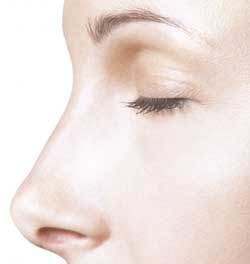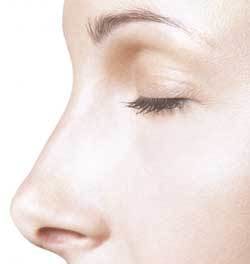Snouts, beaks, and trunks
Each morning when I wake up, I am greeted by a red, green and orange toucan beak, a bright pink pig snout, and a gray elephant trunk. These noses remind me how lucky I am to have a nose to scratch and a place to perch my glasses. It reminds me how my life-saving advice literally saved my own life.
A small white sign surrounded by toothbrushes and floss sits in the corner of my treatment room. In purple letters it reads: “Want some life saving advice? Ask your hygienist.”1 It reminds me every day to check my patients’ overall and oral health. Last year, this sign changed my life.
It was a typical busy day, full of great patients. One patient recounted mastering the oral irrigator and cleaning his bathroom mirror at the same time. Another produced a picture of his small French hotel bathroom filled with oral care items from floss to a rubber tip stimulator.
It was the type of morning that makes me realize I reached someone, touched a life, or helped change a habit. My patients were getting it. They were complying with my oral health recommendations, and their health reflected it. It was a great day and I felt wonderful.
The next patient on my schedule was new. During her oral cancer screening I explained that my simple procedure would help her perform an oral, head, and neck screening at home. It is called the red, white, and blue rule. The instructions are simple. Just remember the American flag and look for the following:
• Red things that don’t heal in two weeks.
• White things that you cannot wipe off with a washcloth.
• Patchy blue lesions that look like a faded tattoo.
I showed her where to look and how to palpate. I removed my gloves and mask. My doctor walked in the treatment room while I was going over the rule and heard the patient say, “Like the white spot on the tip of your nose?“ When he overheard this, the doctor looked at my nose through his loupes.
Through the years I have found many cancerous lesions on patients. I have given them life-saving advice about treating those lesions. The small white dot on the tip of my nose had been there for months and did not look like any of the cancer pictures in the pathology books. I just covered it up with makeup, reassuring myself that it was just an age spot. Little did I know that my advice would save my own life.
My general practitioner evaluated the spot the following day. An hour later I was headed to the dermatologist. The general practitioner didn’t feel the spot was critical, but he wanted a specialist to evaluate it anyway.
The dermatologist did a biopsy and explained that it was beyond his expertise to treat such a large area. He referred me to a plastic surgeon. The plastic surgeon explained the cancer had infiltrated into a large area. The white dot my patient had seen on the tip of my nose was the tip of the iceberg. The dermatologist showed me artificial noses and explained different treatment options. She explained that a specialist called a MOHS surgeon could treat this type of cancer best. There was a chance that I could lose my nose. A MOHS surgeon would give me the greatest chance of saving tissue with the least disfigurement and least chance of reoccurrence.
MOHS micrographic surgery is an advanced treatment procedure for skin cancer that offers the highest chance of recovery. Developed by Frederic E. Mohs, MD, in the 1930s, the MOHS micrographic surgical procedure has been refined and perfected for more than 50 years. Initially, Dr. Mohs removed tumors with a chemosurgical technique. Thin layers of tissue were excised and frozen before being pathologically examined. He developed a unique technique of color-coding excised specimens and created a mapping process to accurately identify the location of remaining cancerous cells.
This procedure is state-of-the-art treatment in which the physician serves as surgeon, pathologist, and reconstructive surgeon. It relies on the accuracy of a microscope to trace and ensure removal of skin cancer down to its roots. This procedure allows dermatologists trained in MOHS surgery to see beyond the visible disease to precisely identify and remove the entire tumor while leaving healthy tissue unharmed. This procedure is most often used in treating two of the most common forms of skin cancer: basal cell carcinoma and squamous cell carcinoma.
The cure rate for MOHS micrographic surgery is the highest of all skin cancer treatments - up to 99 percent even if other forms of treatment have failed. This procedure, the most exact and precise method of tumor removal, minimizes the chance of regrowth and decreases the potential for scarring or disfigurement.2 When my husband and I went to the MOHS surgeon the following day, we were assured that the procedure would provide the greatest chance of me keeping my nose and of the cancer not reoccurring. I like my nose and did not look forward to losing it. Dr Andy Kaufman explained the procedure and options for care.
The day of surgery I felt like I was in the best place to receive the best treatment available. I knew there was a chance of losing my nose, but I also knew there had been a chance of losing my life had my patient not asked that life-saving question.
After the MOHS procedure, reconstruction was performed using my own facial tissue. Dr Kaufmann performed a technique called flapping. My facial tissue was used to create enough healthy tissue to cover my nose. This was followed up with two procedures weeks later to contour the tissue as it stretched, and was finally abraded to smooth the scar tissue. I defy anyone to find the scar! It is amazing!
My sister Nancy greeted me at the door when I returned home bandaged and nauseous from the final treatment. She had a small gift bag that contained three plastic noses - a toucan beak, a pig snout, and an elephant trunk. I laughed until it hurt. Nancy wanted to make sure that I had backup noses available. I am fully recovered and will never look at that little sign in my treatment room the same way again. I am so thankful that it reads, “Want some life saving advice? Ask your hygienist.” Each time I share the red, white, and blue rule, I remember how blessed I am.
References
1. American Dental Hygiene Association Campaign for Oral Health
2. www.mohscollege.org

